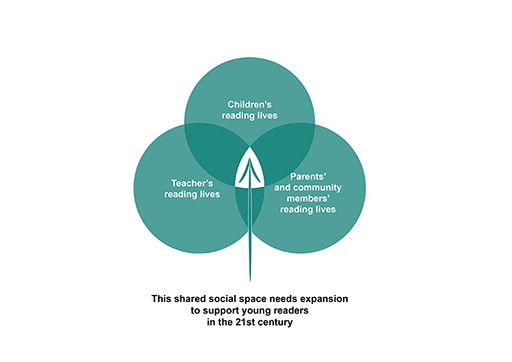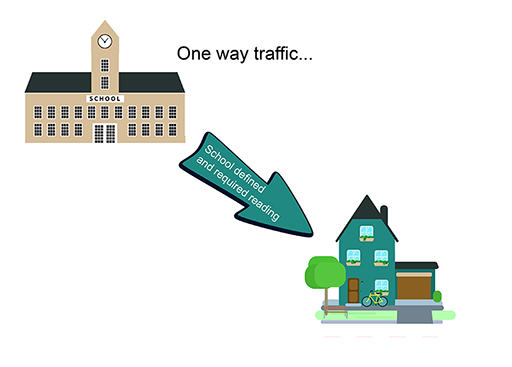6 Developing two-way traffic between home and school
While educators recognise that parents and the home environment are essential to fostering a love of reading, the traffic between home and school is frequently one way, with reading materials moving from school to home (Marsh, 2003) and with teachers expecting parents to induct their children into the school’s reading routines and practices.
Despite best intentions, much of the communication between home and school centres around children’s reading progress and the skills of reading. Parents are often expected to hear their children read and practise word decoding, ask questions, and sign and comment in their child’s reading record. This can be valuable, but parents also need to be supported to understand the importance of their child choosing to read, the value of being a childhood reader and how they could nurture this habit to support their child.
Activity 3 Home–school reading connections
Make a list of all the home school reading connections you offer, or opportunities you experience, e.g. sending books home (what kind: book banded books, phonically regular books, free-choice books), home–school reading record, book bags, parents’ evenings, reading assemblies, etc. Then make a note of your responses to the following questions.
- How two-way are these?
- What information from home are you building on in school?
- Do these connections encompass supporting an RfP culture at home?
Comment
Individual schools develop their own approaches to building partnerships with parents and engaging parents in their children’s education. Whilst all schools commit to this, it is critical that these partnerships become two-way dialogues. With a high emphasis on reading tests and targets and an ongoing pressure to raise reading standards, it is possible that the messages or books being sent home implicitly position reading as a daily routine or task to be undertaken. If reading homework is seen as a chore, by parent or child, then this will inevitably constrain the potentially pleasurable, emotional and shared nature of the experience. Looking at your notes on home–school connections and practices, do you consider you are part of a genuine partnership, which includes full attention to choice-led Reading for Pleasure?
To foster genuinely equivalent reading relationships with families, and to explore the possible interaction between teachers’, children’s and parents’ reading lives and practices, the shared social space noted in the model for the development of shared reading lives shown in Figure 3, deserves development and attention.

This model moves the partnership far beyond parents completing home–school reading records ‘for’ their child’s school and attending parents’ evenings to be ‘told’ what they must do to support their child. It creates a new set of possibilities to work together, ones that recognise differences and commonalities, are shaped in each context, and are supported by the continuous commitment to the school’s reading culture. This may, over time begin to blur the boundaries between home and school reading.

